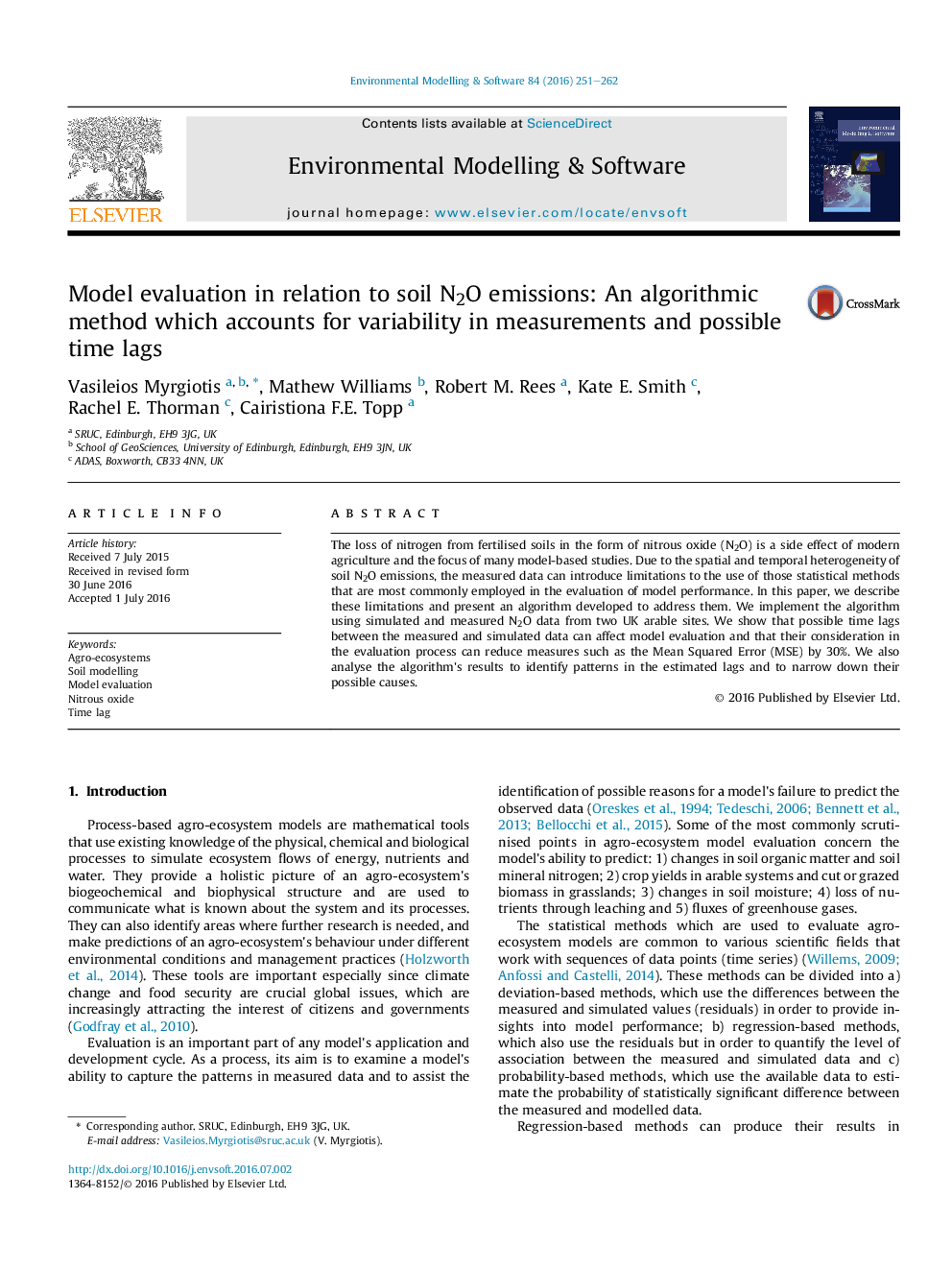| Article ID | Journal | Published Year | Pages | File Type |
|---|---|---|---|---|
| 6962345 | Environmental Modelling & Software | 2016 | 12 Pages |
Abstract
The loss of nitrogen from fertilised soils in the form of nitrous oxide (N2O) is a side effect of modern agriculture and the focus of many model-based studies. Due to the spatial and temporal heterogeneity of soil N2O emissions, the measured data can introduce limitations to the use of those statistical methods that are most commonly employed in the evaluation of model performance. In this paper, we describe these limitations and present an algorithm developed to address them. We implement the algorithm using simulated and measured N2O data from two UK arable sites. We show that possible time lags between the measured and simulated data can affect model evaluation and that their consideration in the evaluation process can reduce measures such as the Mean Squared Error (MSE) by 30%. We also analyse the algorithm's results to identify patterns in the estimated lags and to narrow down their possible causes.
Related Topics
Physical Sciences and Engineering
Computer Science
Software
Authors
Vasileios Myrgiotis, Mathew Williams, Robert M. Rees, Kate E. Smith, Rachel E. Thorman, Cairistiona F.E. Topp,
